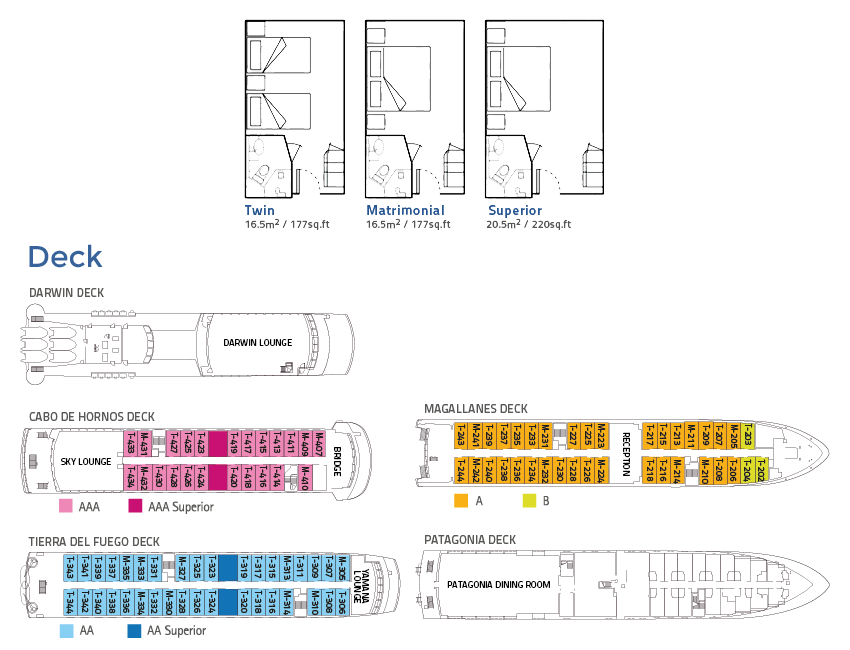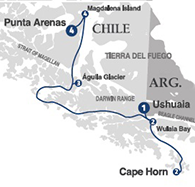Discover Patagonia Ush-Punta Arenas 4 days / 3 nights
Introduction
Expedition cruise to the “uttermost end of the earth”. Sailing between Ushuaia (Argentina) and Punta Arenas (Chile) for discover the splendor and beauty of Patagonia’s wildlife and landscapes.
-
Day 1 Ushuaia

Check in at 160 Juan Manuel de Rosas Street in downtown Ushuaia between 10:00 and 17:00 (10 AM-5 PM) on the day of your cruise departure.
2016-2017 Season: Board the M/V Stella Australis at 17:30 (5:30 PM).
2017-2018 Season: Board the M/V Stella Australis at 18:00 (6 PM).After a welcoming toast and introduction of captain and crew, the ship departs for one of the most remote corners of planet Earth. During the night we traverse the Beagle Channel and cross from Argentina into Chilean territorial waters. The lights of Ushuaia disappear as we turn into the narrow Murray Channel between Navarino and Hoste islands.
-
Day 2 Cape Horn - Wulaia Bay
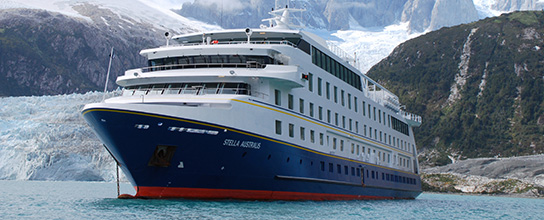
Around the break of dawn, Stella Australis crosses Nassau Bay and enters the remote archipelago that comprises Cape Horn National Park. Weather and sea conditions permitting, we shall go ashore on the windswept island that harbors legendary Cape Horn (Cabo de Hornos). Discovered in 1616 by a Dutch maritime expedition -- and named after the town of Hoorn in West Friesland -- Cape Horn is a sheer 425-meter (1,394-foot) high rocky promontory overlooking the turbulent waters of the Drake Passage. For many years it was the only navigation route between the Pacific and Atlantic, and was often referred to as the "End of the Earth." The park was declared a World Biosphere Reserve by UNESCO in 2005. The Chilean navy maintains a permanent lighthouse on the island, staffed by a lightkeeper and his family, as well as the tiny Stella Maris Chapel and modern Cape Horn Monument (currently awaiting repair after being damaged by fierce winds).
Sailing back across Nassau Bay, we anchor at fabled Wulaia Bay, one of the few places in the archipelago where the human history is just as compelling as the natural environment. Originally the site of one of the region’s largest Yámana aboriginal settlements, the bay was described by Charles Darwin and sketched by Captain FitzRoy in the 1830s during their voyages on HMS Beagle. This area is also renowned for its mesmerizing beauty and dramatic geography. After a visit to the Australis-sponsored museum in the old radio station -- which is especially strong on the Yámana people and European missionaries in the area -- passengers have a choice of three hikes (of increasing degrees of difficulty) that ascend the heavily wooded mountain behind the bay. On all of these you stroll through an enchanted Magellanic forest of lengas, coigües, canelos and ferns to reach panoramic viewpoints overlooking the bay.
-
Day 3 De Agostini Sound & Águila Glacier

After nightfall we reenter the Beagle Channel and sail westward along the southern edge of Tierra del Fuego into a watery wonderland protected within the confines of Alberto de Agostini National Park. Rounding the Brecknock Peninsula as the western extreme of Tierra del Fuego, Stella Australis is briefly exposed to the open Pacific. We then navigate a zigzag route through the Cockburn Channel, Magdalena Channel and Keats Fjord to reach scenic De Agostini Sound.
Named after an Italian Salesian priest who worked among the region's indigenous people during the first half of the 20th century, De Agostini Sound is flanked by numerous glaciers and sheer saw-toothed peaks reminiscent of Torres del Paine. Our shore excursion this morning is Águila ("Eagle") Glacier, which hovers above a placid glacial lagoon surrounded by primeval forest. After a Zodiac landing on the beach, passengers hike around the edge of the lagoon to a spot near the base of the frozen facade. Condors can sometimes be seen winging high above, but there is always abundant bird life around the lagoon. This landing provides the perfect opportunity to experience the beauty of Patagonia’s sub-Antarctic rainforest and to see how the power of nature has molded the spectacular landscape.
-
Day 4 Magdalena Island
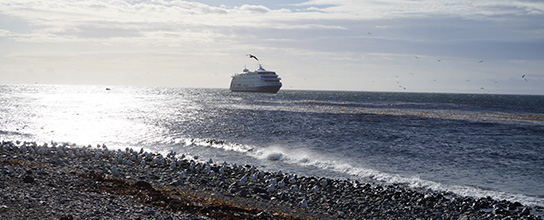
After an overnight cruise through Magdalena Channel and back into the Strait of Magellan, we anchor off Magdalena Island, which lies about halfway between Tierra del Fuego and the Chilean mainland. Crowned by a distinctive lighthouse, the island used to be an essential source of supplies for navigators and explorers and is inhabited by an immense colony of Magellanic penguins. At the break of dawn, weather permitting, we go ashore and hike a path that leads through thousands of penguins to a small museum lodged inside the vintage 1902 lighthouse. Many other bird species are also found on the island. In September and April -- when the penguins dwell elsewhere -- this excursion is replaced by a ride aboard Zodiacs to Marta Island to observe Southamerican sea lions. After a short cruise south along the strait, disembarkation at Punta Arenas is scheduled for around 11:30 AM.
*Camera extension poles are prohibited on Magdalena Island
Vessels
-
Stella Australis
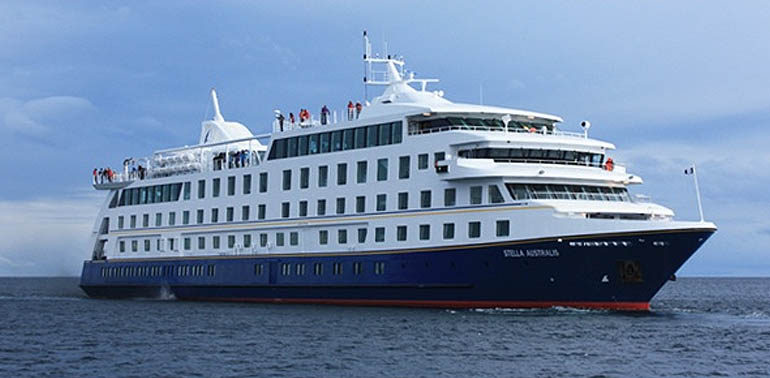
The Stella Australis offers a relaxed stay, while providing breathtaking sights from the decks. Australis cruises allows reaching all of Patagonia’s fabulous venues, attractions, and expeditions. Before you embark on your Patagonia adventure enjoy the comfort of cabins that provide you with incredible ocean views and lavish decor. Wine and dine, mix and mingle, and enjoy our fabulous entertainment on your Patagonia vacation.
Features
Construction Year:2010Passenger Capacity:210Total Cabins:100Cabins
B Cabins:3A Cabins:34AA Cabins:36AAA Cabins:23AA Superior Cabins:2AAA Superior Cabins:2
-
Ventus Australis
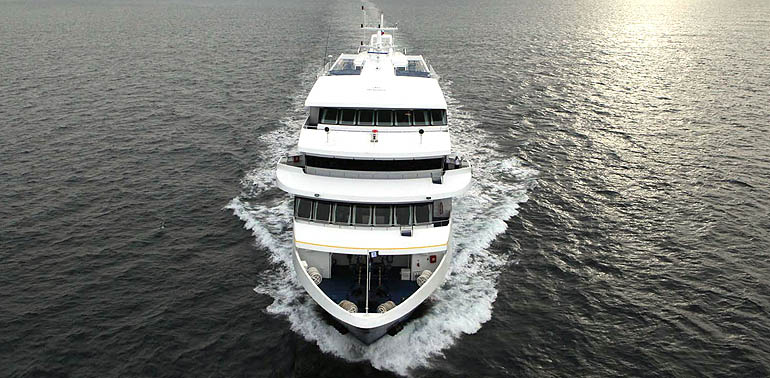
Ventus Australis is the name announced for the new state-of-the-art ship being built for Australis Expedition cruise line.
The name – Latin for "Southern Wind" – reflects Tierra del Fuego's distinctive weather, a factor that has long determined the region's socio-cultural development and that so impressed the early mariners who endeavored to explore Patagonia's southernmost waterways.
Tailor-made for exploring the remote southern tip of South America, all aspects of the 210-passenger ship -- including size, length, draft and engine power -- are designed to give Ventus Australis the extreme maneuverability necessary to navigate narrow fjords and channels where no other cruise ships can venture.
Asenav, the internationally acclaimed Chilean shipyard, is creating our latest masterpiece, just as they did with the three other expedition ships for Australis.
Ventus Australis will feature the latest regulations regarding safety at sea and protecting the marine environment, as all of our fleet does.
When it goes into service in early 2018, Ventus Australis will give travelers a chance to experience the remoteness of Patagonia and step ashore at fabled Cape Horn.
Features
Launching season:2017/2018First Departure:January 2nd, 2018Passenger Capacity:210Total Cabins:100